Invisalign® for Teens
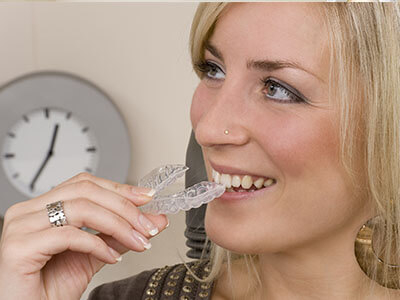
Our Office
Visit Us Online

Invisalign® offers a modern, low-profile way to straighten teeth using clear, removable aligners designed from advanced digital planning. The system emphasizes predictable, staged tooth movement with minimal disruption to daily life, making it a compelling option for many people seeking orthodontic care without traditional metal brackets and wires.

Invisalign® for Teens

Invisalign® for Brides

Invisalign® for Travelers
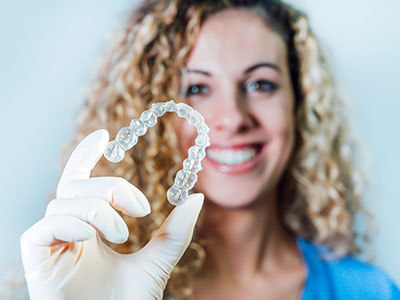
Before & After Photos
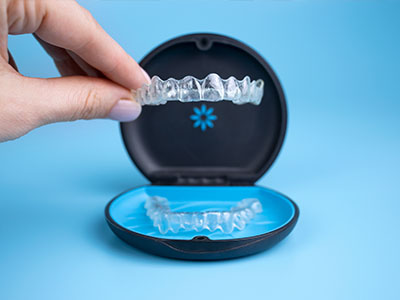
Invisalign® Videos
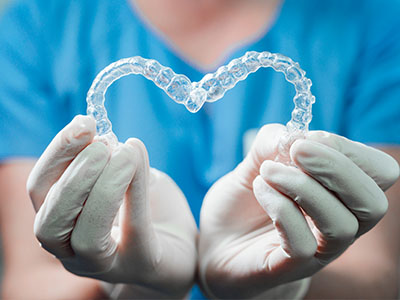
FAQs
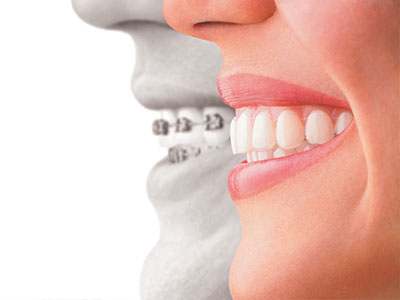
Invisalign® vs Braces
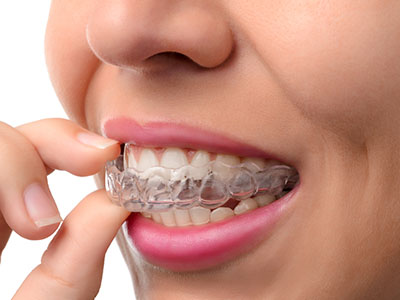
Invisalign® vs Direct-To-Consumer Aligners
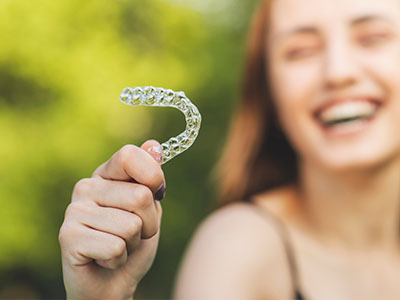
Is Invisalign® Right For Me?

Invisalign® Costs
Because Invisalign® relies on a combination of clinical expertise and digital design, understanding the steps involved can make the process less intimidating. This section focuses on the technology and clinical thinking behind aligner therapy so you can make an informed decision about whether it fits your goals.
Aligner therapy is different from bracket-and-wire orthodontics in its mechanics and day-to-day management, but it achieves many of the same clinical outcomes when applied by experienced providers. As you read on, you’ll learn what makes aligner treatment efficient, how the digital workflow works, and what to expect from consultations through retention.
Clear aligners are prized for their discreet appearance and user-friendly routine. Unlike fixed braces, aligners are nearly invisible when worn and can be removed for eating and oral hygiene. This balance of aesthetics and practicality often leads people to choose aligners for social, professional, or lifestyle reasons without sacrificing treatment effectiveness.
Beyond esthetics, modern aligner systems use precise, sequential trays to move teeth predictably. Each tray is engineered to shift teeth incrementally, and the overall plan is mapped out digitally so both patient and clinician can visualize intermediate stages and the projected final result. That degree of planning helps reduce surprises during treatment.
Aligners can also make day-to-day oral care simpler. Because trays are removed for cleaning, brushing and flossing can be performed without navigating around brackets and wires. That contributes to better gum health during treatment and reduces the likelihood of enamel staining associated with fixed appliances.
Treatment begins with a detailed digital scan or impression that captures the exact position of each tooth. These models are used to build a step-by-step plan that predicts how teeth will move over time. The clinician reviews and refines that plan to ensure it addresses functional concerns as well as cosmetic goals.
Digital planning allows for precise staging of movements, which means complex tooth motions can be broken down into manageable steps. When necessary, attachments—small, tooth-colored auxiliaries—are placed to give certain aligners more control over rotation, extrusion, or tipping. These are designed to be minimally intrusive and are removed once they’ve served their purpose.
Because the entire sequence is visualized up front, clinicians can communicate milestones and expected check-in intervals clearly. This transparency helps patients understand the commitment required and supports predictable progress through periodic clinical reviews and scan updates when indicated.
Successful treatment depends on consistent wear. Clinicians typically recommend wearing aligners for the majority of each day, removing them only for eating, drinking (except water), and oral hygiene. This routine supports steady, reliable movement as planned during the digital setup.
Aligners generally have little impact on speech after a short adaptation period and can be managed comfortably during most activities. Because they are removable, patients can continue to enjoy their normal diets and participate in sports or musical performances without long-term compromises to comfort or appearance.
Hygiene is straightforward: remove the trays to brush and floss normally, then rinse the aligners before reinserting them. Simple care habits help keep both the mouth and the aligners fresh throughout treatment and support healthier tissues during tooth movement.
Aligners are capable of addressing a broad range of alignment issues, from mild spacing and crowding to many bite irregularities. With careful case selection and ongoing clinical oversight, aligner therapy can correct rotations, close gaps, and improve occlusion in ways that meet both aesthetic and functional objectives.
One of the strengths of contemporary aligner therapy is its ability to integrate with other restorative or periodontal treatments when needed. For example, minor tooth position adjustments can be coordinated with crown or veneer planning, and aligners are often used to create optimal spacing for restorations.
That said, complex skeletal discrepancies or certain severe bite problems may require alternative or adjunctive approaches. A thorough clinical exam will clarify whether aligners alone are appropriate or if a combined treatment pathway provides the most predictable outcome.
The treatment process is designed to be transparent: you’ll see a digital preview of the planned sequence and receive aligners that match those stages. Regular check-ins allow your provider to confirm that movements are tracking as expected and make adjustments if small refinements are necessary.
Because aligner therapy blends engineering with clinical judgment, patients benefit from both predictable mechanics and the oversight of an experienced dental team. That combination supports safer, more efficient movement and a smoother journey from first scan to finished smile.

Your first visit includes a careful evaluation of tooth positions, bite relationships, and oral health. This assessment helps the clinician define realistic treatment objectives and determine whether aligners are the best fit for your needs.
During the consultation, we discuss what matters most to you—whether that’s a subtler improvement or a comprehensive alignment plan—and set expectations for timing and clinical milestones without oversimplifying the steps involved.
Any necessary preparatory care, such as addressing active decay or gum inflammation, is completed before aligner therapy begins to ensure a healthy foundation for movement.
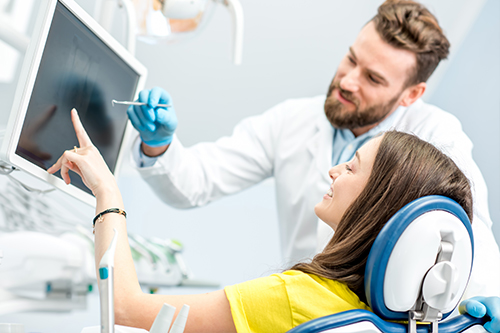
A fast, precise digital scan captures your current bite and tooth positions. That information is used to craft a custom treatment plan that sequences tooth movements logically and safely from start to finish.
You’ll be able to preview the proposed outcome and understand the steps required to reach that result. This preview is a collaborative tool—clinician and patient work together to refine goals before fabrication begins.
The plan also identifies when attachments or interproximal reduction might be helpful, and these elements are incorporated to enhance control without compromising comfort.
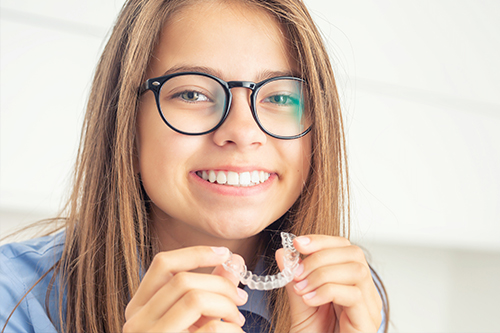
Aligners are produced to match the planned sequence and are designed with patient comfort in mind. Each tray applies gentle, controlled forces so teeth move in predictable increments.
Because the trays are removable, patients maintain normal routines for eating and cleaning, which supports oral health throughout treatment. Proper wear and upkeep are the most important factors in achieving timely progress.
Periodic reviews ensure the treatment is progressing as intended and allow the clinician to make adjustments or order refinements when necessary.

From the first set of aligners to the moment treatment goals are reached, clinical oversight remains essential. Scheduled visits let your provider verify alignment progress and address any questions that arise.
After active movement is complete, a retention plan preserves the new tooth positions. This step is a fundamental part of predictable long-term results and is tailored to each patient’s needs.
Our approach emphasizes partnership: clear communication and consistent follow-up help ensure that the final outcome is both stable and satisfying.
Browse short videos that explain the mechanics of aligner therapy and show typical stages of care.
*Invisalign® is a registered trademark of Align Technology, Inc.
At Towne Dental & Orthodontics, our goal is to provide clear, evidence-informed guidance so patients can choose the treatment path that best aligns with their functional and aesthetic priorities. If you’re curious about whether Invisalign® could be the right option, we welcome the chance to review your case in a focused consultation.
Please contact us for more information or to schedule an appointment. Our team is available to answer your questions and help you take the next step toward a healthier, more confident smile.
There are many options for patients who want to avoid metal braces! The most popular alternative orthodontic treatment is Invisalign®, which are clear plastic aligners designed to straighten teeth. After an examination of your teeth, your dentist will determine which option is best suited to your wants and needs.
According to the Invisalign® website, the cost for treatment is approximately the same as the cost for metal braces. A portion of this cost may be covered by your insurance. Please call us to set up a consultation and discuss potential payment plan options.
The first step is to schedule a consultation with your doctor, so they can devise a treatment plan that is best suited to your individual dental needs. Once approved, you will receive your first set of aligners. Your doctor will then regularly monitor the movement of your teeth and new aligners will be ordered according to the progress made in your treatment plan.
Invisalign® aligners are made of clear, flexible plastic. The company received a patent for this material – SmartTrack® – to be used exclusively for Invisalign treatment purposes. These aligners are FDA approved and nearly invisible!
Your doctor will give you an estimate regarding how long your Invisalign® treatment should take, which will depend on your specific needs. The average length of time for treatment is approximately 12-18 months. However, some patients may see results far sooner. Remember to wear your aligners exactly as instructed by your doctor to obtain the best results.
Your doctor will most likely recommend that you wear retainers following your Invisalign® treatment. This is a precaution that will prevent your teeth from shifting back to their original positioning. It is important to follow your doctor's instructions exactly to ensure long-lasting results.
You must wear your aligners for up to 22 hours daily. You may remove them for eating, drinking and regular oral hygiene.
No. Unlike braces, you may eat whatever you like as long as you remove the aligners before eating. Prior to placing the aligners back on, it is important to brush your teeth and the aligners after you eat.
Like any orthodontic treatment, there is a short adjustment period. The more you speak with the aligners on, the quicker you will adjust.
There will be some pressure and minor discomfort for a day or two after each initial insertion. This is a sign that your teeth are moving sequentially into their final position.
It is recommended that you remove your aligners prior to chewing gum as the gum will stick to the aligners.
We discourage smoking with aligners as the cigarette smoke will tend to discolor them.
Brushing them with toothpaste will keep them fresh and clean.
Regular office visits are every five to six weeks. This will ensure that your Invisalign treatment is progressing as planned.
All orthodontic patients are instructed to wear their retainers at night indefinitely. Sleeping with your retainers in at night will ensure a healthy bite and maintain the new position of your teeth.
Yes, if their teeth, including second molars, have grown in completely.
Invisalign® uses a series of clear, removable aligners that fit snugly over the teeth and apply gentle, planned forces to move teeth into new positions. These aligners are fabricated from digital models of your mouth that map a staged treatment sequence from the current position to the desired outcome. The design emphasizes patient comfort and a low-profile appearance compared with fixed appliances.
Each tray in the series is worn for a set interval before being replaced by the next tray, which continues the progression toward the final alignment. This stepwise approach allows clinicians to predict and monitor movement while making adjustments when necessary. Regular clinical oversight ensures the treatment stays on track and addresses functional as well as aesthetic goals.
Clear aligners are valued for their near-invisibility and the ability to remove them for eating and oral hygiene, which simplifies daily routines and preserves appearance during treatment. Because they are removable, patients can brush and floss without navigating around brackets and wires, reducing the risk of gum inflammation and enamel staining. Many people prefer the flexibility and low-profile look that aligners provide.
Modern aligner therapy uses precise digital planning to visualize intermediate stages and expected outcomes, which improves predictability and patient understanding. Aligner trays also tend to cause less soft-tissue irritation than brackets and wires, and they can be coordinated with other dental work when needed. These features make aligners an attractive choice for patients seeking effective, discreet orthodontic care.
Aligner therapy can address a wide range of tooth-position problems, including mild to moderate crowding, spacing, and many bite irregularities when selected and managed appropriately. Complex skeletal discrepancies or severe malocclusions may require complementary treatments or referral to a specialist, so candidacy depends on a thorough clinical assessment. A dental exam, imaging, and discussion of your goals help determine whether aligners alone are suitable.
Good oral health is important before starting treatment, so active decay or gum disease is typically treated first to provide a stable foundation for movement. Your clinician will review medical and dental history, evaluate jaw relationships and tooth movement needs, and explain realistic expectations for timing and outcomes. If aligners are not the best option, the team will outline alternative or combined approaches.
The process begins with a comprehensive exam and a precise digital scan or impression that captures your current bite and tooth positions. From that scan a step-by-step treatment plan is developed and reviewed with you so both patient and clinician understand the projected stages and final goal. Fabrication of the aligners follows, and any necessary preparatory care—such as restorations or periodontal therapy—is completed before movement begins.
During active treatment you will wear a series of aligners and attend periodic check-ins so the clinician can confirm progress and request refinements if needed. Expect a collaborative process that balances the engineered mechanics of the trays with clinical judgment to achieve functional as well as aesthetic objectives. At Towne Dental & Orthodontics, we provide regular oversight and clear milestones so patients know what to expect at each stage.
Digital planning creates a visual roadmap of tooth movement that both the patient and clinician can review before treatment begins, which reduces uncertainty and clarifies expectations. Three-dimensional models allow precise staging of movements so complex motions can be broken into controlled steps, improving predictability. This upfront visualization also helps identify when auxiliaries or refinements will be necessary.
Because the entire sequence is mapped digitally, clinicians can communicate milestones, set realistic check-in intervals, and make data-driven refinements when teeth do not track as planned. The workflow supports efficient coordination with other restorative or periodontal treatments by showing the timing and extent of space changes. Overall, digital planning enhances transparency and patient engagement throughout therapy.
Attachments are small, tooth-colored composite shapes bonded to selected teeth to give aligners extra grip and control for specific movements such as rotation or extrusion. They are designed to be minimally noticeable and are removed once they have served their purpose. Attachments increase the range of tooth motions achievable with aligners while maintaining a discreet appearance.
Interproximal reduction (IPR) is a conservative technique that lightly reduces enamel between teeth to create space for alignment when needed. IPR is performed selectively and carefully to preserve tooth structure while improving outcomes in crowding cases or where minor reshaping enhances alignment. Both attachments and IPR are tools clinicians use to refine control and improve the predictability of treatment.
Successful aligner therapy depends on consistent wear for the majority of the day, with trays removed only for eating, drinking anything other than water, and oral hygiene. Following the prescribed wear schedule and changing trays as directed are the most important factors in achieving the planned tooth movements. Skipping wear or inconsistent use can slow progress and may require additional refinements.
Cleaning aligners daily helps prevent odor and staining; rinse them after removal, brush them gently with a soft brush, and avoid hot water that can warp the plastic. Store trays in their case when not in use to protect them and maintain hygiene, and clean your teeth thoroughly before reinserting aligners to reduce plaque buildup. Regular clinical reviews allow your provider to evaluate wear patterns and advise on any needed adjustments.
Most people experience only a brief adaptation period to speaking with aligners, and normal speech typically returns within a few days as the mouth adjusts. Because aligners are removable, they do not permanently limit activities such as sports or musical performance. For contact sports, clinicians may recommend a properly fitted mouthguard that works with or without the aligner in place.
Aligners are designed to be low profile and comfortable for daily life, and they generally interfere minimally with eating because they are removed for meals. Patients should avoid soaking trays in abrasive cleaners and should follow care instructions to maintain comfort and fit. If persistent speech changes or discomfort occur, timely clinical review can identify solutions such as minor adjustments or refinements.
Yes, aligner therapy is often coordinated with restorative and periodontal treatments to achieve both functional and aesthetic goals. Minor tooth movements can create ideal spacing for crowns, veneers, or implant placement and can be timed so restorative work follows predictable alignment stages. Collaborative planning between the orthodontic clinician and restorative providers yields better integrated outcomes.
Your treatment plan will identify when to sequence restorative steps and whether temporary measures are needed during movement, such as provisional restorations. Communication about timing, required space, and final tooth positions helps ensure restorations are placed accurately and predictably. This multidisciplinary approach supports long-term stability and optimal function.
Retention is a fundamental part of orthodontic care and involves wearing retainers to hold teeth in their new positions once active movement is complete. Retainer types and schedules vary based on individual needs and the specific movements performed, and clinicians tailor plans to minimize relapse risk. Long-term monitoring with periodic exams helps detect and manage any changes early.
Towne Dental & Orthodontics provides customized retention strategies and follow-up so patients can maintain their results with confidence and predictability. Emphasizing night-time retainer wear and routine check-ins helps preserve outcomes as teeth naturally respond to function and aging. If minor settling or changes occur, the clinical team can recommend conservative measures or refinements to restore alignment.